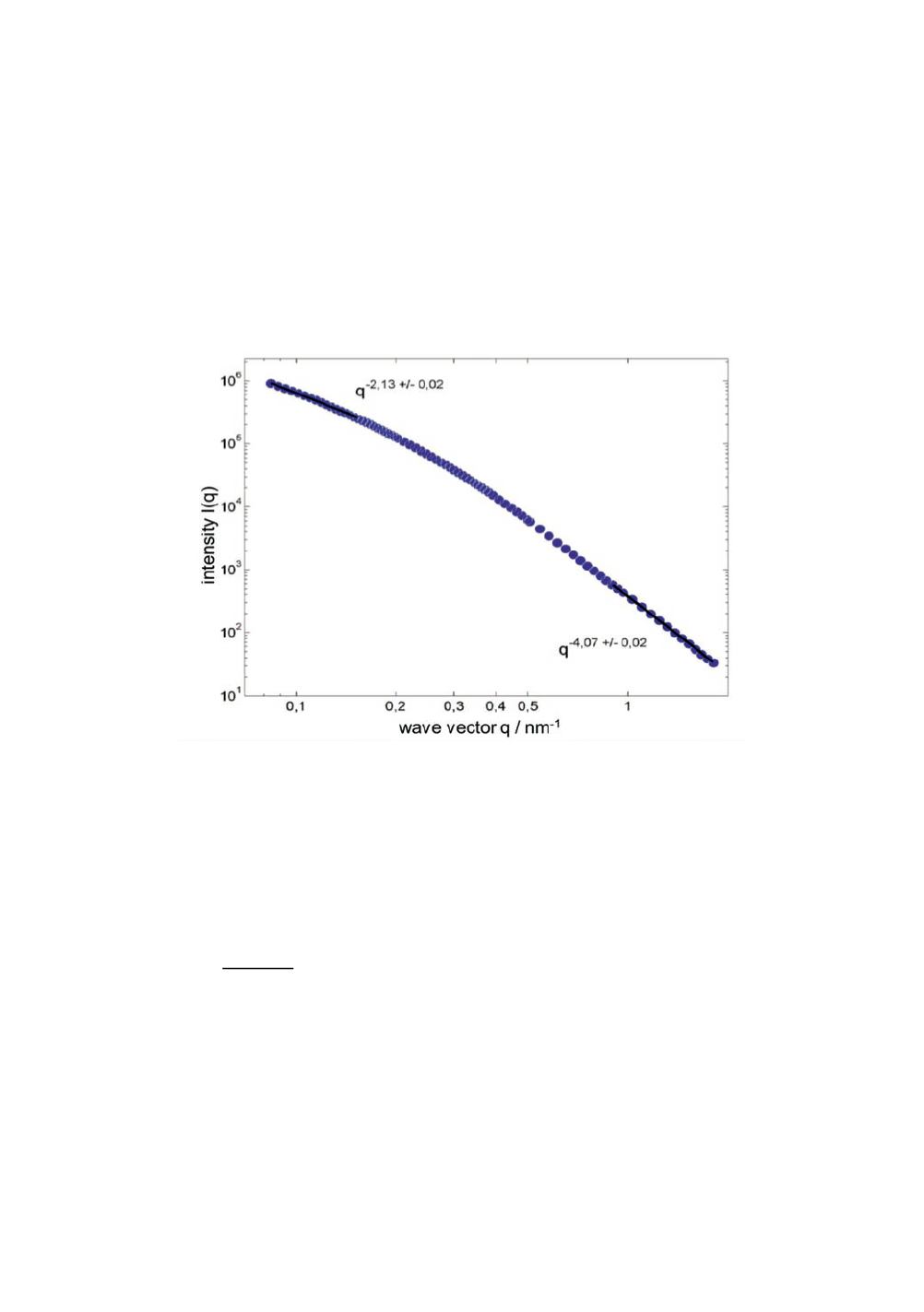

surface without surface porosity. The mass fractal dimension of 2.13 indicates an open,
very space filling structure. However, in literature even lower fractal dimensions in the
range of 1.5 – 1.9 have been reported for pyrogenic silica [28, 29]. The differences
might be due to different conditions within production processes of the pyrogenic silica
producers. The space-filling properties of pyrogenic silica aggregates are an important
feature which directly leads to the use to pyrogenic silica as rheological control
additive, thermal insulation material, and reinforcing filler [30]. The different
application will be discussed later.
Figure 10:
Scattering date for pyrogenic silica of 200 m
2
/g specific surface area.
Particle size and particle size distribution are important parameters to characterize
powders [31]. However, particle size of hierarchical systems like pyrogenic silica is an
ill-defined feature. The values strongly depend on the measuring technique and
conditions of sample preparation. Depending on the size range of the hierarchical
system, different techniques are employed. Particle size of primary particles within the
sintered aggregates can be determined by TEM analysis or from the specific surface
area according to eq. 7 which results in the Sauter diameter D
pp
of primary particles.
ܦ
ൌ
ௌௌή ఘ
ೄೀ మ
(7)
The Sauter diameter of primary particles of silica with 200 m
2
/g specific surface area is
ca. 14 nm. The Sauter diameter of pyrogenic silica is often cited in scientific literature
but this is somehow misleading since it implies that isolated primary particles are
accessible.
For most applications, the aggregate size is the relevant parameter. An established
method to determine the particle size of sub-micron particles is photon correlation
115


















